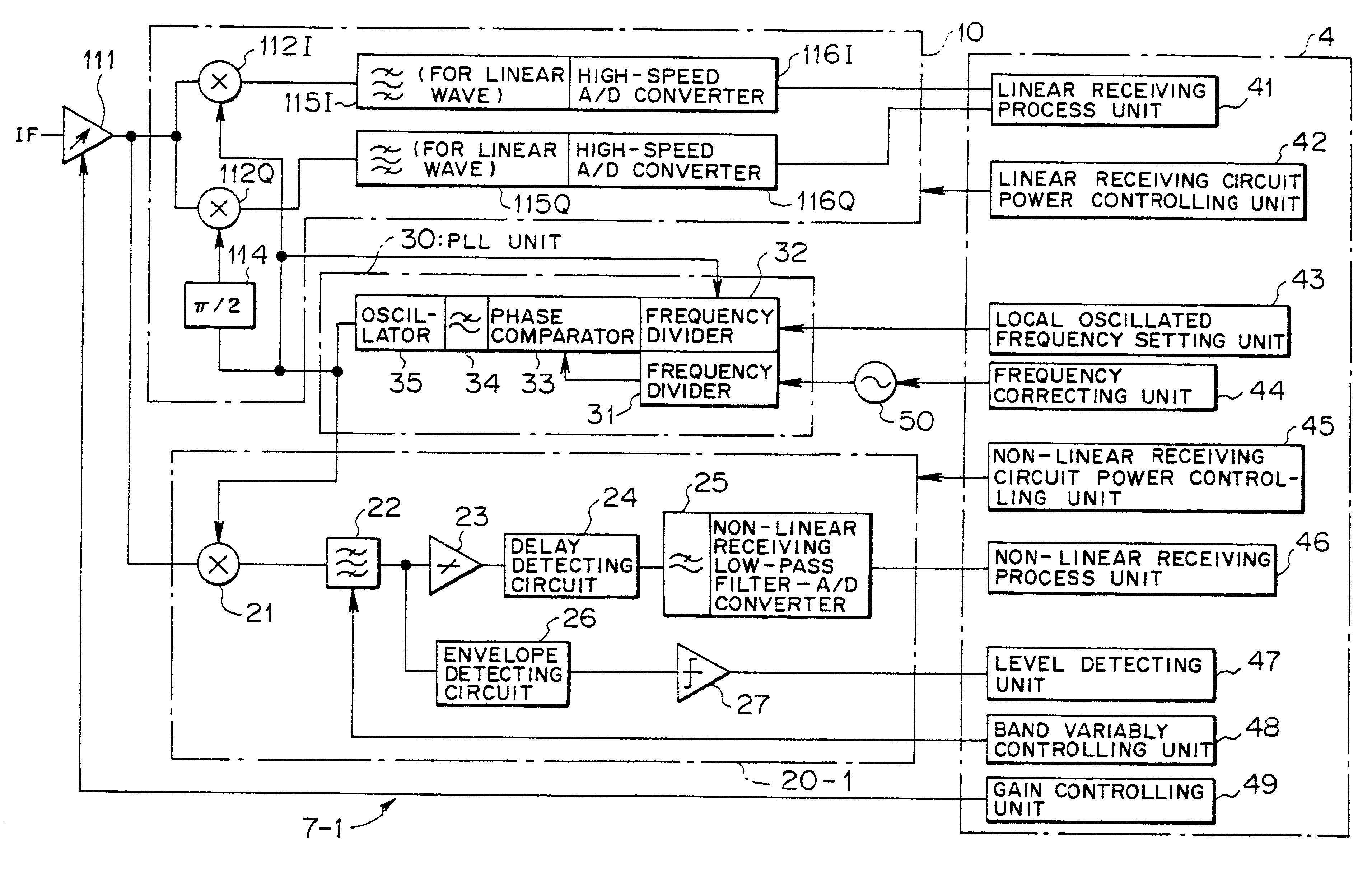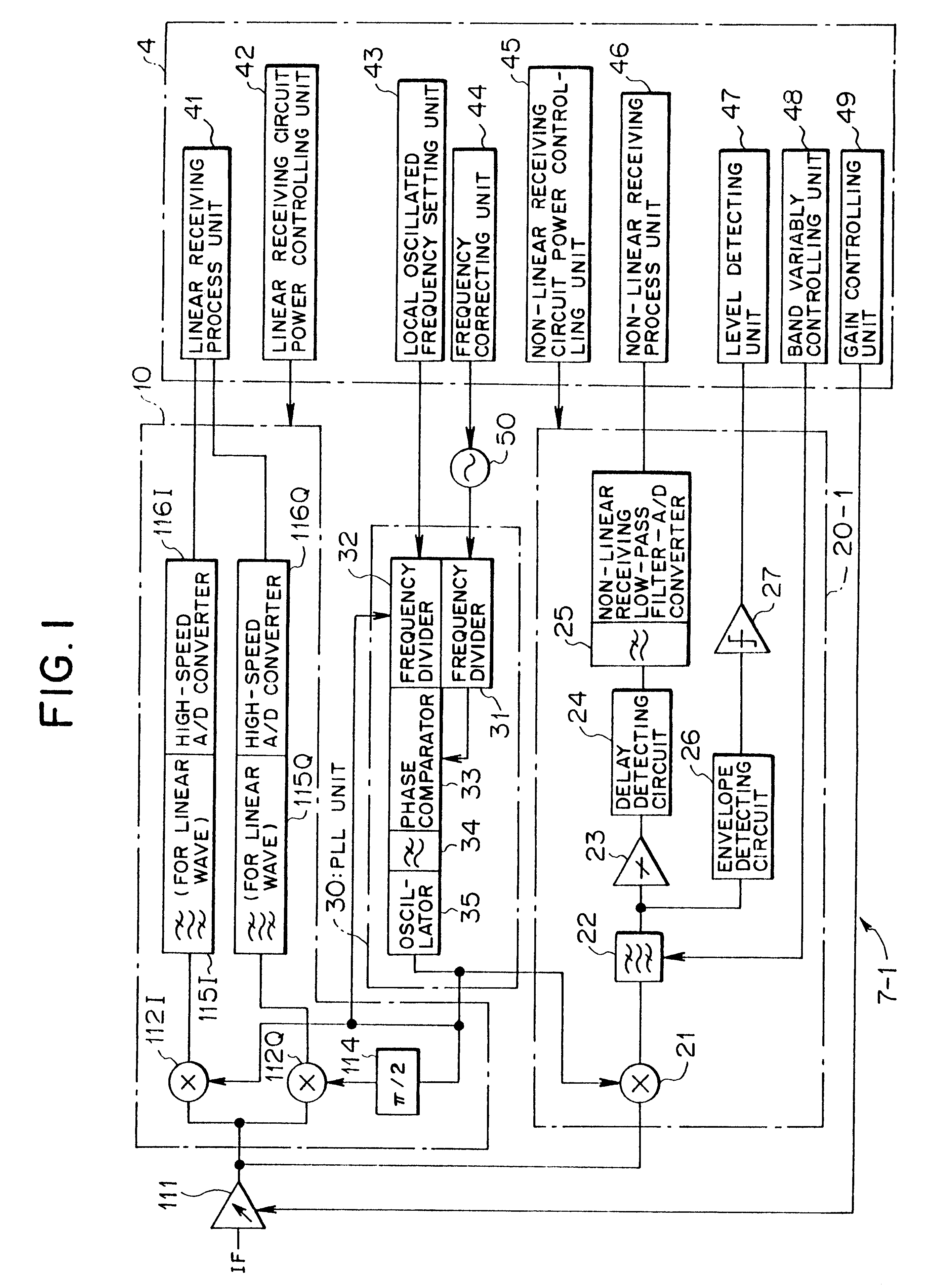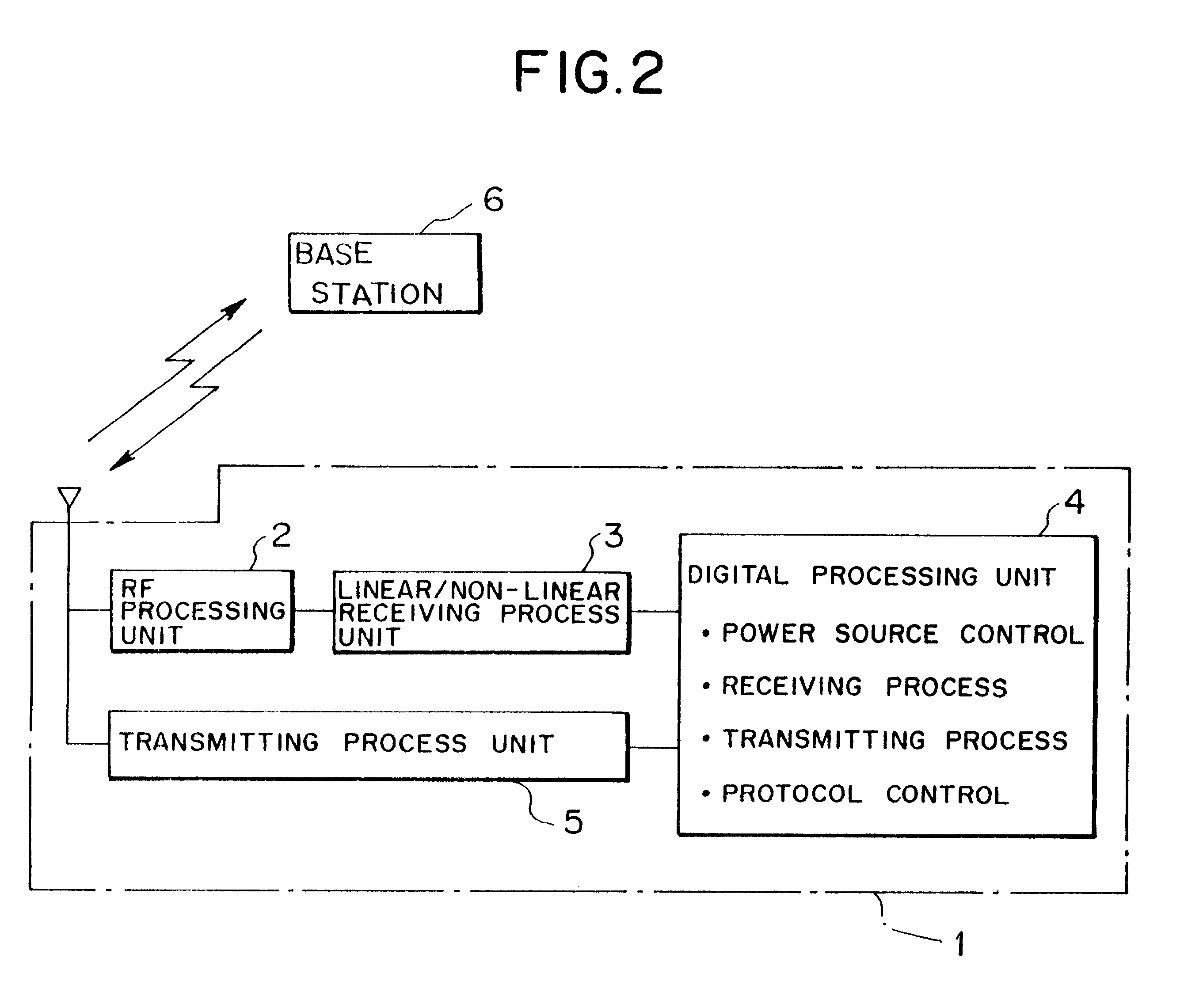Two-mode demodulating apparatus
a demodulating apparatus and two-mode technology, applied in the direction of phase-modulated carrier systems, digital transmission, transmission monitoring, etc., can solve the problems of insufficient number of base stations to which such digital communication systems having a higher frequency utilization efficiency are connected, and the interruption of lines is often difficult to achiev
- Summary
- Abstract
- Description
- Claims
- Application Information
AI Technical Summary
Problems solved by technology
Method used
Image
Examples
first embodiment
FIG. 1 is a block diagram showing a two-mode demodulating apparatus according to this invention. A two-mode demodulating apparatus 7-1 shown in FIG. 1 is applicable to a linear / non-linear receiving process unit 3 and a digital processing unit 4 as a received signal processing system of a mobile station 1 in a mobile communication system as shown in FIG. 2, for example.
The mobile station 1 shown in FIG. 2 has an RF processing unit 2 and the linear / non-linear receiving process unit 3 as a receiving system, the digital processing unit 4, and a transmitting process unit 5, thereby exchanging a linear modulated wave in a digital communication system or a non-linear modulated wave in an analog communication system with a base station 6.
The RF processing unit 2 performs frequency conversion on a received signal (RF signal) in a high frequency, and outputs an intermediate frequency signal (IF signal) as the received signal. The linear / non-linear reception processing unit 3 demodulates a lin...
second embodiment
(b) Description of a Second Embodiment
FIG. 6 is a block diagram showing a two-mode demodulating apparatus according to a second embodiment of this invention. A two-mode demodulating apparatus 7-2 shown in FIG. 6 has a non-linear reception demodulating circuit 20-2 with a structure different from that of the non-linear reception demodulating circuit 20-1 of the above-mentioned two-mode demodulating apparatus 7-1 according to the first embodiment.
In the non-linear reception demodulating circuit 20-2 according to the second embodiment, there is provided a frequency measuring circuit 28 instead of the delay detecting circuit 24 and the non-linear receiving low-pass filter-A / D converter 25 as the non-linear reception demodulating process unit, the frequency measuring circuit 28 demodulating a received signal.
Namely, the frequency measuring circuit 28 measures a frequency of a signal, which has been subjected to band limit such as to be adapted to a baseband signal band in a desired non-l...
third embodiment
(c) Description of a Third Embodiment
FIG. 9 is a block diagram showing a two-mode demodulating apparatus according to a third embodiment of this invention. A two-mode demodulating apparatus 7-3 shown in FIG. 9 has a non-linear reception demodulating circuit 20-3 having a different structure, as compared with the above two-mode demodulating apparatus 7-1 according to the first embodiment.
Namely, the non-linear reception demodulating circuit 20-3 according to the third embodiment has a down sampling-A / D converter (analog-to-digital converting circuit) 29 receiving an output from the band-limit filter 22 to perform a down sampling operation, instead of the delay detecting circuit 24, the non-linear receiving low-pass filer-A / D converter 25 as the non-linear reception demodulating process unit. The down-sampling-A / D converter 29 can demodulate the received signal.
The down sampling-A / D converter 29 has, in detail, sample-and-hold circuits 29A and 29B in two systems, a circuit changing sw...
PUM
 Login to View More
Login to View More Abstract
Description
Claims
Application Information
 Login to View More
Login to View More - R&D
- Intellectual Property
- Life Sciences
- Materials
- Tech Scout
- Unparalleled Data Quality
- Higher Quality Content
- 60% Fewer Hallucinations
Browse by: Latest US Patents, China's latest patents, Technical Efficacy Thesaurus, Application Domain, Technology Topic, Popular Technical Reports.
© 2025 PatSnap. All rights reserved.Legal|Privacy policy|Modern Slavery Act Transparency Statement|Sitemap|About US| Contact US: help@patsnap.com



